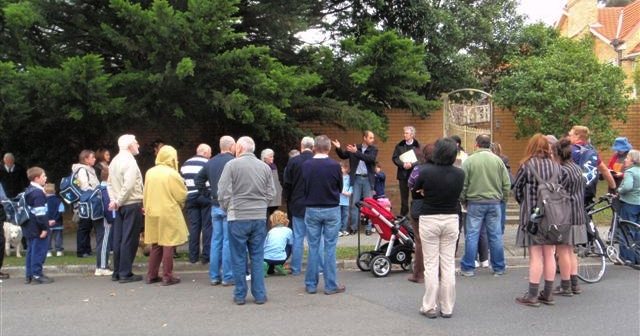Form a walkability group
Finding other people

If you’ve noticed that your neighbourhood could be more walk-friendly, then chances are that others have noticed too!
So how do you find all these great people for your group? You can:
- Put the word out among your own local friends and community networks
- Advertise in local social media groups and sites
- Create some eye-catching posters for your streets and local shops
- Create a leaflet and letterbox your area
- Write short, catchy messages about your issue in chalk on local footpaths!
- Contact the local newspaper about a specific issue or problem in your area to get the word out
- Find out whether any recreational walking groups exist locally (you could try asking your local council, Neighbourhood House or Community Health Centre). These groups might have members who share your interest.
- Join our Victoria-wide Walk Agents Facebook group, founded in 2018.
Think about the best way for interested people to contact you. Consider setting up a separate email account, setting up a Facebook page or group. If your group gets bigger, you may wish to consider getting a dedicated phone number (a second SIM on your mobile, perhaps) so you can keep your personal contact details separate.
What type of group is best?
1. Small and informal WAG
Start a group with people you already know and get along with, for example some neighbours concerned about some specific local issues. By starting small you can keep it simple and minimise the risk of getting bogged down with processes.
2. WAG with more formal structure
Setting up a Walkability Action Group with a more formal structure can take a little more work to start but, if you have got a good mix of enthusiastic people, you might as well aim high! Here's a site with some great information about structures.
3. WAG as a subgroup of an existing community group
Forming a WAG as a subgroup of an existing group may be a quicker way to get your group going. It also means that you’ll already have somewhere to meet and can get support from the bigger group. Another advantage is that your WAG may be able to be covered by the community group's liability insurance cover.
There are many types of existing groups that could form a WAG, including:
- Neighbourhood House— a WAG could be run as an activity or class
- Climate action group
- Residents action group
- Scouts or guides
- University of the third age (U3A).
4. Workplace WAG
-
A workplace WAG is a great way for businesses to get involved in your local community. Conduct a walking audit on the streets around the workplace and take action to make them better for walking!